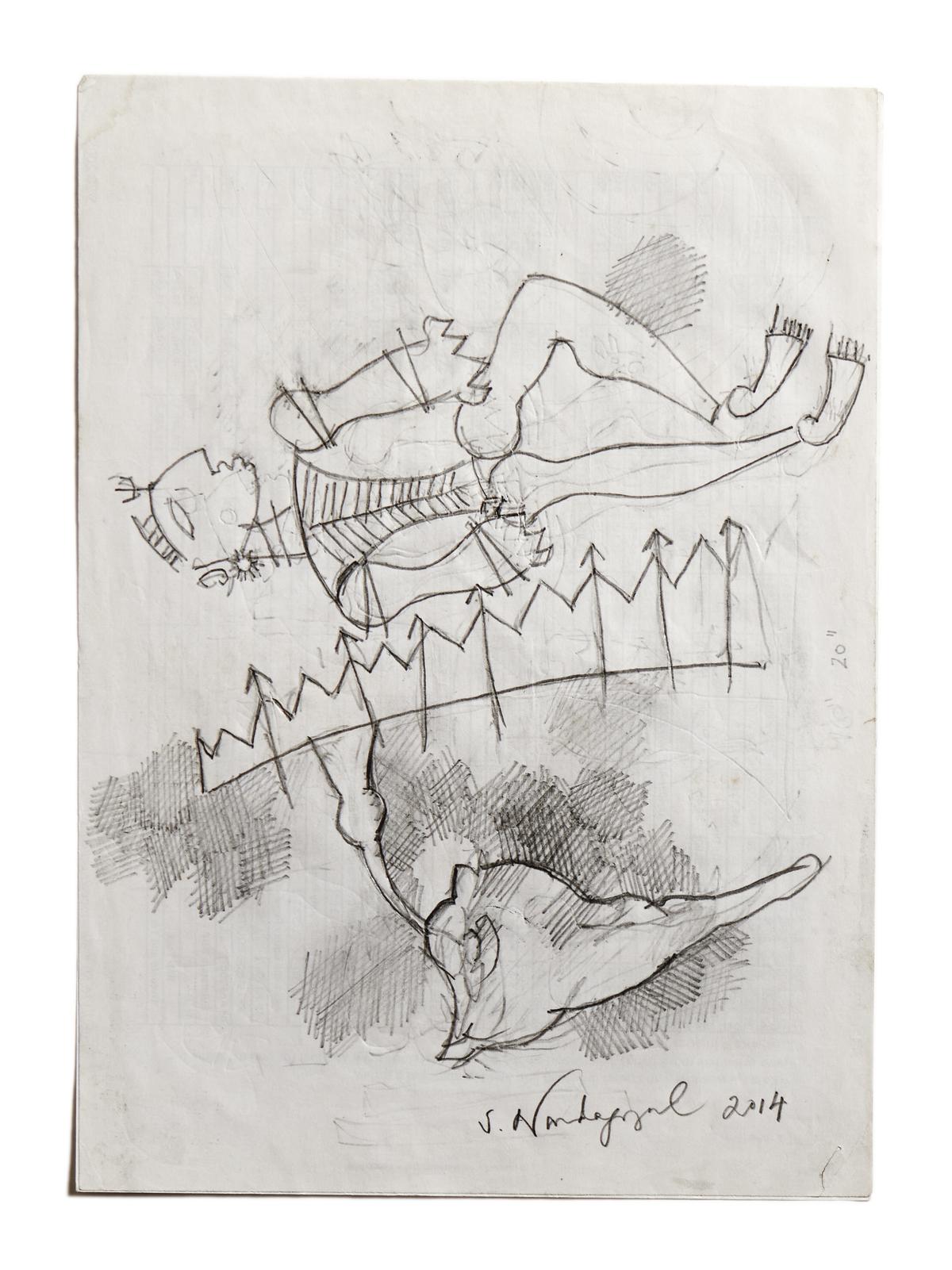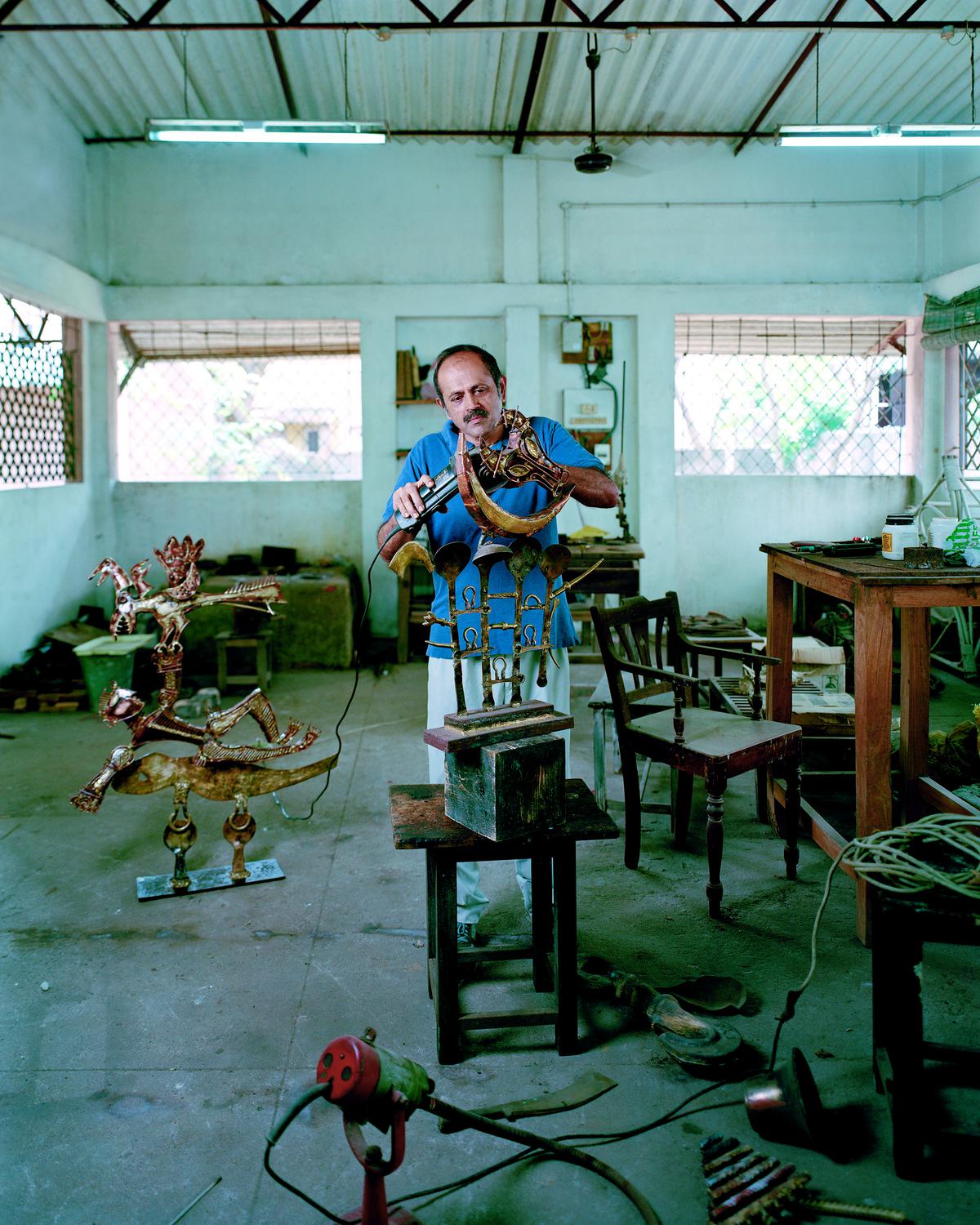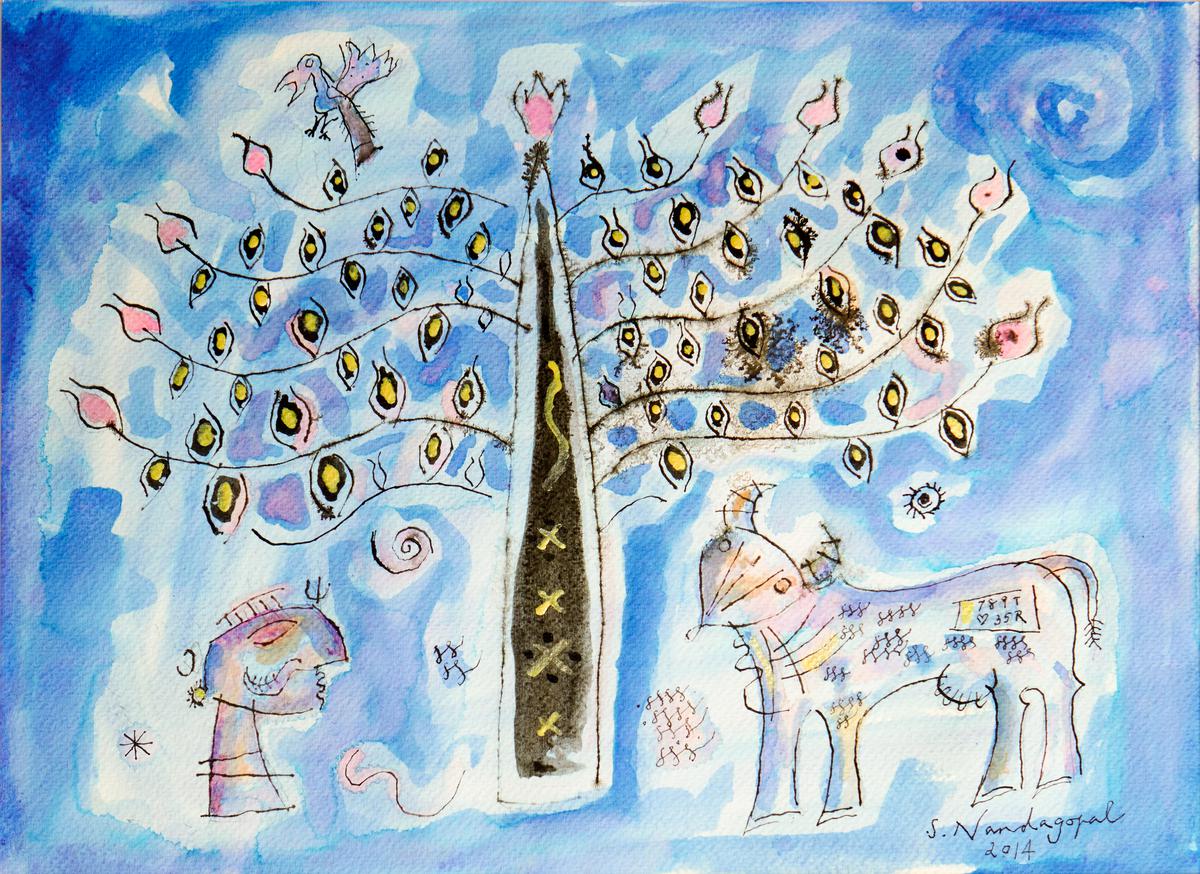Tough sketches on stray items of paper, notes detailing the construction of his subsequent masterpiece: this retrospective on S Nandagopal opens a window into the artists’ psyche
Tough sketches on stray items of paper, notes detailing the construction of his subsequent masterpiece: this retrospective on S Nandagopal opens a window into the artists’ psyche
Theirs was a “24/7 artwork home”.
Contemplating the legacy it proudly hosts — of seminal artist KCS Paniker, pioneer of the Madras Artwork Motion who based Cholamandal Artists’ Village and his son S Nandagopal, one of many final custodians of the Motion —conversations about artwork have been inevitable. And strewn on the eating desk have been spontaneous sketches and notes, typically hurriedly scribbled, on stray items of paper.
“The desk was by no means clear!” Pallavi Nandagopal says, recalling her father stooped over the desk, tracing the delivery of an concept that might quickly come to life in metallic.
These sketches are an enchanting glimpse into S Nandagopal’s inventive course of: the artist broke floor in abstraction, utilizing the medium of sculpture.
Now neatly framed, they’re a part of a “mini-retrospective” on Nandagopal’s fifth 12 months of passing, at Focus Artwork Gallery.

Bhishma, the drawing
| Picture Credit score: SPECIAL ARRANGEMENT
The gathering, which reveals his work from early 2000s until 2016, opens a window into the artists’ psyche, proper at that second an concept strikes.
Typical of the Madras Artwork Motion, Nandagopal had a powerful base in drawing. “Typically, he would draw until the top of the sheet and realise there was no area. So he’ll take one other piece, connect it and proceed drawing,” says Pallavi.
The imperfections, tears, and haphazardly stuck-together items are all uncooked reminders of the quantity of laborious work that goes behind every completed piece of artwork.
Pallavi’s mom and the late artist’s spouse Kala Nandagopal, provides, “For a very long time, these have been hidden away as private items. Lots of the earlier sketches have been in all probability simply thrown away.” Sharing them with the general public, she says, is essential since these sketches would have in any other case been forgotten, not like the sculptures.

S Nandagopal at his workspace
| Picture Credit score: SPECIAL ARRANGEMENT
As they have been curating the sketches — there are 33 on show — they have been in a position to join many with completed sculptures: the show has 11 such sculptures positioned in juxtaposition to the draft sketches. Bhishma, a mildly enameled sculpture that reveals one among The Mahabharata’s pivotal characters reclining on the famed mattress of arrows is an identifiable copy of the drawing signed in 2014.
Alongside this, are 20 watercolors accomplished by the artist between 2014 and 2016. “In the course of the peak summer time months in Madras, we might encourage him to not get into the studio and work on sculptures. He would do watercolors, and drawing in these months, particularly as he grew older,” says Pallavi.
Although he began off as a painter, Nandagopal’s admiration for seminal Indian sculptors like PV Janakiram and Dhanraj Bhagat, coupled with the need to interrupt away from his father’s mould and medium, steered him in the direction of copper, brass and chrome steel. Parts harking back to South Indian mythology that function within the work of artists a part of the Motion, are seen right here as nicely.
Kala reaffirms that he was not a very non secular man. But, symbols and characters that he might have encountered in passing, usually stayed contemporary in his reminiscence, and later manifested in his work. “Earlier sculptures have been impressed by the Hero Stone and Sati Stone ideas,” says Kala.
His curiosity in literature, significantly of Earnest Hemingway’s work, displays on his fishermen sequence, an ode to the literary large’s Outdated Man and the Sea.

A watercolour work by Nandagopal accomplished between 2014 and 2016
| Picture Credit score: SPECIAL ARRANGEMENT
All his enameled sculptures, with hints of color, are small in scale: “He usually stated that they have been like jewels, virtually,” says Pallavi. On the identical time, sculptures which might be massive in scale (12ft to 23ft), are sometimes simplified by the artist, making it extra accessible for public areas.
Images of Nandagopal alongside these monumental works are sprinkled by means of the narrative. The Mythic & The Magical, a 56-minute documentary that traces Nandagopal’s creative journey by means of a pleasant collage of hardly ever seen pictures from his youth, and accounts from artwork critics and journalists, will probably be screened on the opening days.
All of the works are on sale. The present will probably be on from October 7 to 13, at Focus Artwork Gallery, Alwarpet. The movie screening will probably be held on October 7 and eight.
